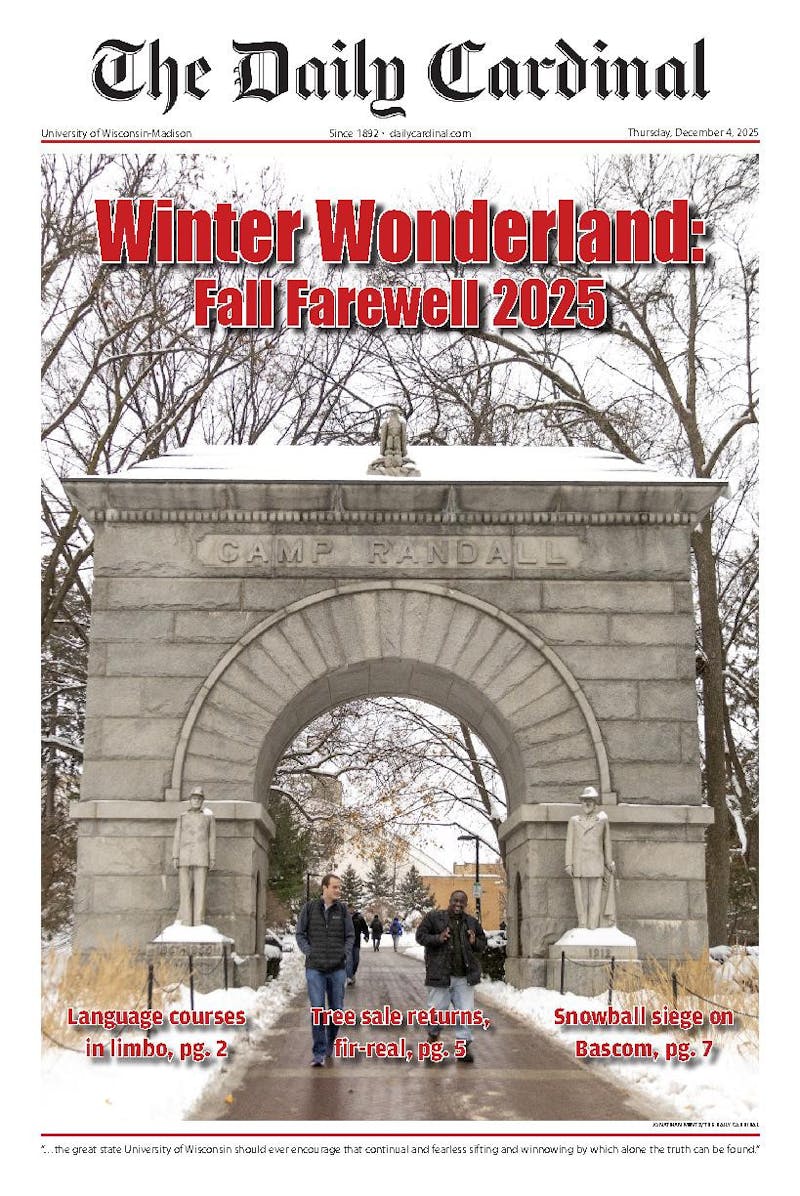As the weather cools in Madison, monarch butterflies have started to make their way to the warmer Oyamel Fir forests of central Mexico. Unable to survive the cold, northern winters, monarchs fly up to 3,000 miles south to reach their overwintering site in a unique, long-distance migration.
Karen Oberhauser, retired director of the University of Wisconsin-Madison Arboretum, has four decades of experience studying monarchs and their migration patterns. In an interview with The Daily Cardinal, she uncovered the mysteries of monarch migration and discussed challenges these butterflies face.
Where are the butterflies now?
Using Journey North, a community-input monarch migration tracker that maps monarchs on their journey to Mexico, Oberhauser said many monarchs are already halfway through their journey.
“I just saw some [monarchs] in my yard this morning, so there are still monarchs in Wisconsin, but the ones that left first are almost at their wintering sites,” Oberhauser said.
Monarchs are known for their unique migration habits, but only a select generation of monarchs, known as the “monarch super generation,” make the journey to Mexico every year. It all depends on when the monarchs emerge: those that emerge as butterflies after the middle of August will migrate and wait months to reproduce, but monarchs who emerge before that reproduce right away and only live for four to six weeks.
“The butterflies we see here in the summertime are ready to mate and lay eggs when they’re about four days old, so their life just goes faster because they’re spending a lot of energy reproducing and it’s warmer where they are,” Oberhauser said.
The lifespans of migrating monarchs are much longer — around eight or nine months. Instead of reproducing right away, monarchs that migrate to Mexico wait until the following spring on their journey north to reproduce, laying eggs along the way.
As soon as they start reproducing, though, their remaining lifespan is limited. Migrating monarchs are only able to make it around halfway through their journey back north, typically ending up in Kansas and Tennessee. Their offspring complete the journey, making them the first generation of the new year.
During the spring and summer months, monarch butterflies return to their breeding ground in the upper Midwest.
Located in the middle of the monarchs’ main breeding ground, southern Wisconsin has an especially dense monarch population.
“It’s a lot of habitat that has milkweed and nectar plants. There’s a lot of prairie restoration going on, so anywhere those conditions exist, monarchs will find [them],” Oberhauser said.
While monarchs are concentrated in the upper Midwest, they can live in many kinds of habitats. From somebody’s backyard to prairies to the roadside, monarchs only need two things to survive: milkweed and flowers. Milkweed is caterpillars’ only source of food and flowers are food for adult butterflies.
Due to habitat loss, climate change and insecticide use, the monarch population is in decline. However, Oberhauser says this past summer was “pretty good” for Wisconsin’s monarch population, since June and July brought a fair amount of rain and no extreme heat.
But this year’s recovery is no guarantee for next year, Oberhauser said.
Monarchs are highly driven by weather conditions. If the weather is too hot and dry or rainy and wet, monarchs aren’t able to migrate to Mexico and reproduce. Increasing insecticide use also kills off many monarchs, as insecticides kill all insects, not just pests.
“It’s kind of like habitat determines how many [monarchs] there can be and then weather and insecticide use determine whether we can achieve the maximum [population] we can with the amount of habitat that we have,” Oberhauser said.
Eight states, including Minnesota and Illinois, currently designate monarch butterflies as their state butterfly. Legislators recently introduced a bill to make the monarch the official state butterfly in Wisconsin, too.
“I think people have always been really interested in monarchs,” Oberhauser said. “What’s important is that people know about them and care enough about them to help them, and making them the state butterfly just might do that.”






